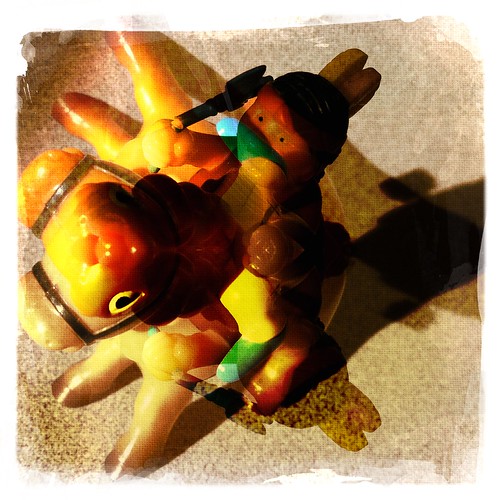JOHNNY DEPP'S GOT PAPERS NOW, HE'S BEEN GIVEN CREDENTIALS
So, word has spread across the Internet like a wildfire in the southwest, but the Apache 8 aren't there to comment on this absurdity. If you haven't guessed, Johnny Depp is officially a Comanche. He can now ignore his Cherokee ancestry he so steadfastly clung to while being vetted of his "Nativeness." Or was it Creek? Well that doesn't matter any longer because the Comanche adopted him. I guess he'll be selling his estate in France and flying to Oklahoma or New Mexico (where his adoption ceremony took place):
(New Mexico Business Weekly by Megan Kamerick, Senior Reporter
Date: Monday, May 21, 2012, 5:09pm MDT)
In the above article, LaDonna Harris mentions,
It seemed like a natural fit to officially welcome him into our Comanche family. I reached out, and Johnny was very receptive to the idea. He seemed proud to receive the invitation, and we were honored that he so enthusiastically agreed.I'm a little lost for words that by PLAYING INDIAN (a phenomenon coined by Phillip DeLoria), specifically Tonto, more specifically a Comanche, makes it "a natural fit" to adopt Depp into the Comanche Nation. Thousands of little kids play "Cowboys and Indians" all the time, some kids are Lakota, some are Pawnee, some are Apache. It makes sense that Depp would be "receptive to the idea . . ." while enthusiastically agreeing to do so, it's nearly every kid's fantasy to be NDN--and it's been no different for Depp, claiming different tribal ties in various interviews as well as directing a film in which for the first time he PLAYED INDIAN, The Brave (1997). Unfortunately, what Depp is doing isn't catapulting Indigenous culture into the 21st century, nor is his pretending combatting negative stereotypes surrounding NDNs.* On the contrary, his actions are perpetuating stereotypes that continue to diminish who We are by the cinematic mode.
Depp's portrayal, the actual act of taking a role away from a Native actor (playing red face), not his acting, is insidious. He is perpetuating myths about Native people in a medium that is so disseminated and more often than not in America--Americans educate themselves with popular culture--Americans believe, or at least get their information from what they see on the screen, the portrayals by actors (you know pretending to be NDN) as historically accurate and acceptable. These manifestations are so damaging that they hinder Us from moving forward in the 21st century because We are being relegated to anachronistic versions of Ourselves making Our present all the more difficult to negotiate.
Now, whatever the Comanche Nation wants to do is their business, but I'm not sure how Johnny Depp's "acting" role as Tonto in The Lone Ranger has anything to do with adopting a movie star into a tribe. Maybe I'm missing something? Comanche Nation Tribal Chairman, Johnny Wauqua commented about Depp in a news release that,
He's a very thoughtful human being, and throughout his life and career, he has exhibited traits that are aligned with the values and worldview that indigenous people share.Really? I'm a bit perplexed in regards to Depp's "exhibited traits" aligning him with Indigenous people. Don't get me wrong, I'm sure he gives money to worthy causes, and he's probably a very nice guy. But just why didn't his directorial debut film, The Brave (1997) ever hit a screen in North America? Was it really because of the negative reception it received at the Canne Film Festival? Was he hurt because his moment of make-believe wasn't believable (that no one could believe he was Native, onscreen or off)? The Brave (1997) didn't receive rave reviews, and therefore by association Johnny Depp wasn't validated as BEING INDIAN, which negated his fantasy of BECOMING INDIAN. I think these particular acts speak volumes when it comes to "exhibited traits."
In my opinion, this is a simple case of someone being starstruck, "it seemed a natural fit to officially welcome him into our Comanche family." Is that what "IT" is? Never is "it" elaborated upon, unless you assume Depp's role as a fictional Comanche is "IT."
________________________________________________
* To add to my argument I reference my earlier post, Johnny Depp to Play Tonto, Once Again Depp Has Some Degree of NDN Blood? Perfect Timing!
and elaborate that Depp mentions in an interview (Linthicum, Albuquerque Journal, 3/8/2012) how he'll handle the years of stereotyped portrayals of Natives in film. Apparently, through his performance he imagines he will somehow combat these stereotypes by not acting like the stereotypes, but what he fails to comprehend is no matter how good his intentions, the mere fact of him portraying an Indigenous persona, real or fictional, is what will contribute to the damage toll of Indigenous representation in film. One of the most problematic issues of Native Representation in film was and continues to be non-Natives playing the role of Natives. This has got to stop. It's 2012 and there are enough Native actors to play these parts, but it's Hollywood's lack of vision and bottom line that perpetuates the utilization of non-Native movie stars in the roles of Native characters.





